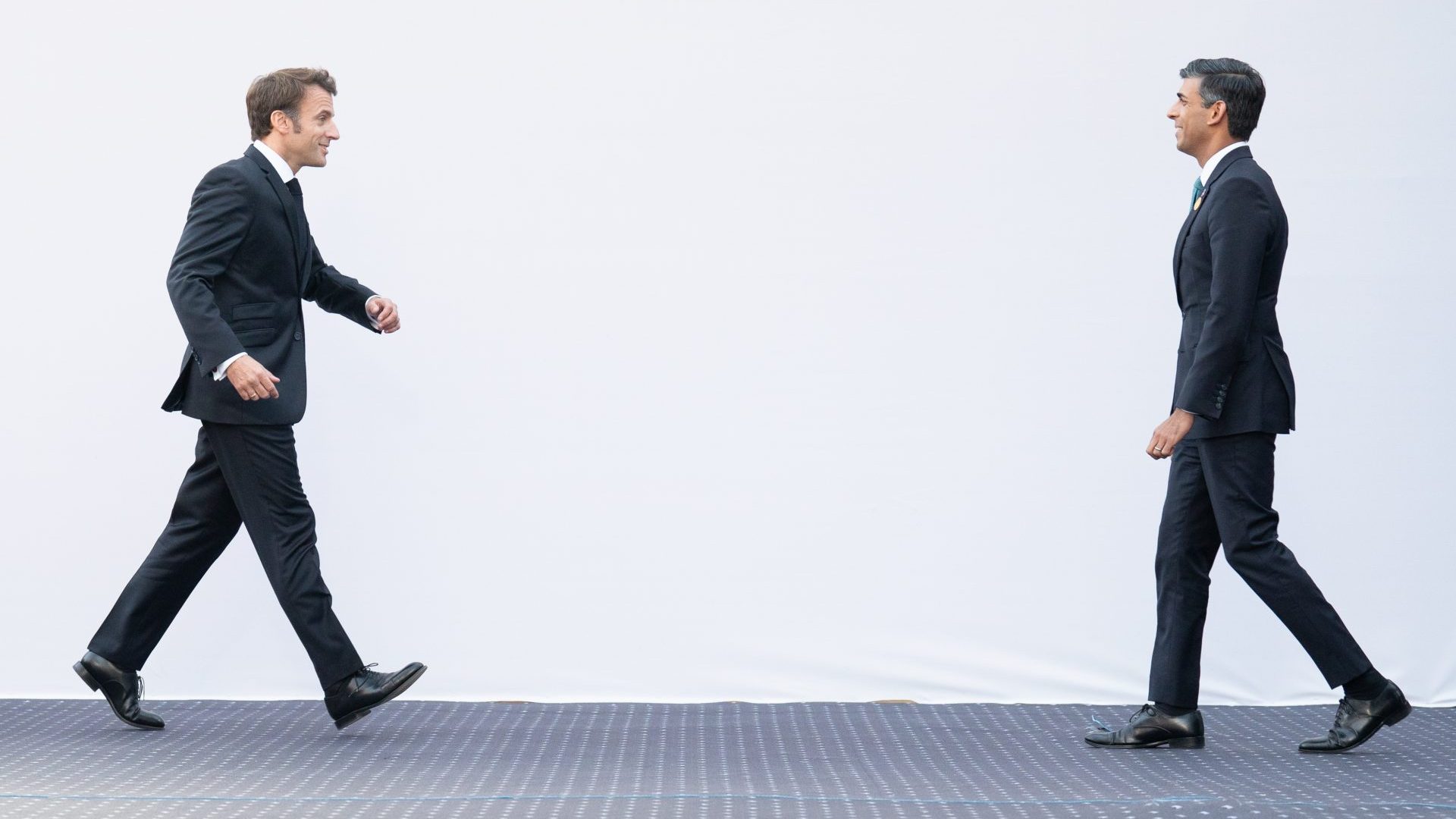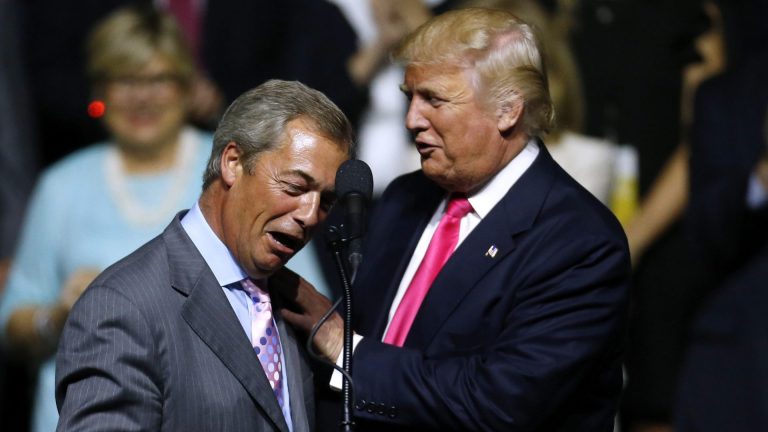Rishi Sunak is part of an exclusive club. While he may soon gain admittance to the one for short-lived Tory leaders, he is already in another with ‘short’ in its name – the new short kings of Europe. At 5ft 7″, Sunak takes his place alongside Olaf Scholz, Emmanuel Macron, Vladimir Putin – all measuring in at 5ft 7″ – and Volodymyr Zelensky at 5ft 6″.
It’s more than just the answer to a tricky pub quiz question. More than anything else, height cuts to the core of the male identity. It speaks to how men perceive themselves and, critically, how they are perceived, especially within a democratic competition. None of this is to say that women, especially tall women, don’t have issues of their own, only that – for nearly all men – how they measure up counts. After all, there’s a reason why Tom Cruise, the most famous film star in the world, still feels the need to wear lifts, or why there’s apparently no public record of the height of the chairman of the European Research Group (ERG), Penfold from Danger Mouse lookalike Mark Francois.
However, claiming evidence of some all-pervasive short-man syndrome is understandably controversial. Even referring to a Napoleon Complex doesn’t hold up to examination. Bonaparte himself came in at around 5ft 6″, about average for his time. In reality, he was simply portrayed as short by his opponents, not least the British cartoonist James Gillray who, inadvertently or not, gave birth to both an entrenched belief about the emperor’s height, as well as the supposed complex that has hung around the reputation of its subject ever since. Like Jessica Rabbit, I suppose, the French emperor wasn’t short, he was just drawn that way. Adding weight to that is the 2007 study by staff at the University of Central Lancashire (UCLan) disproving another misplaced trope around short men; establishing that they were no more aggressive than their taller counterparts.
Of course, there are exceptions. Attila the Hun was said to be remarkably short. The British naval hero, and a contemporary of Napoleon, Horatio Nelson came in at around 5ft 4″. More recently, second world war leaders such as Churchill (5ft 6″), Stalin (5ft 5″) and Benito Mussolini (5ft 7″) all competed brutally for distinct visions of Europe and its future.
Perhaps the ERG leadership should choose comparisons with caution.
Nevertheless, while individually short men have almost certainly exerted profound influence over history, the all-encompassing notion that height is bound up in traditional notions of leadership and masculinity is hard to dispute. A quick look at the roster of US presidents is enough to show how few come in below 5ft 11″. Further evidence of that was provided in 2011 by the University of Texas, which claimed that electorates’ preference for taller leaders stemmed from the evolutionary urge to to be led by taller men into battle, more able to physically better any opponent.
However, perhaps it’s the word “traditional” that is key here, a concept looking increasingly shaky as traditional notions of patriarchy wobble and Europe’s new generation of short kings rise.
None of this is to say that height doesn’t count. A quick call around friends ahead of writing this article was enough to elicit accounts of urinals being fixed too high on walls, or recently-bought trousers having to be altered to fit the wearer. All claimed the experience was humiliating and, more than a few, infantilising. Moreover, nearly every man I spoke to cited problems with dating and somehow being made to feel less desirable as a result of their height.
It isn’t just the personal, either. The stereotypes are everywhere. In film as in literature, concepts of what makes a male hero or leader are irretrievably bound up in their height. Take the western, probably the ultimate barometer of masculinity, and its two most famous heroes, John Wayne (6ft 4″) and Clint Eastwood, (also 6ft 4″) and you get some idea of how closely traditional concepts of masculinity are related to height.
Dr Mike Eslea from UCLan in Preston, who led the study on height and aggression, told the New European: “I think, from an evolutionary perspective, shorter men are less able to compete physically. Instead, to distinguish themselves they tend to be better social manipulators,” he said. His team’s experiment involved fitting monitors to people of different heights to measure their response to receiving a slight injury. Contrary to popular preconceptions, it was the taller subjects involved in the study who were more likely to retaliate, as well as being more angered. “However, smaller men may appear more aggressive because they get more stick for their height,” he said.
It isn’t really a joke. At its most extreme, it can be defining. Joshua Leaf runs a US website dedicated to sharing information on the painful and expensive leg-lengthening procedure that some smaller men resort to in order to gain a few additional inches. Leaf underwent the procedure himself, having both his quadrilateral tibia and femur lengthened to gain five inches in height. Before the operation, he described working in large teams where his ideas or suggestions would be dismissed before being inevitably echoed by taller colleagues. “Of course, I often felt like I had to overcompensate to truly get my point across because,” he said, “I felt being short put me at a disadvantage in social situations.”
For Leaf, despite having resorted to every means of accepting and living with his height, he felt he had reached the point where he had no option but to undergo the surgery. “Height-increasing surgery is undoubtedly one of the most extreme cosmetic surgeries at this time and I quite literally broke my leg because of my height neurosis,” he wrote. “It’s as if I was born in the wrong body, because I felt so able in every aspect of my life but my height was the only thing holding me back.”
If that sounds familiar to those following the trans debate, it should. For many short men learning to live with their height, or even the small number, like Leaf, who resort to surgery, talk of height dysphoria is commonplace.
However, as Europe’s short kings show, perhaps it’s not so much about height as men’s insecurities about their lack of inches that leave them vulnerable. “It’s really about what’s going to get to them, to put them on the back foot,” said Ryan McCormick, a political consultant with Goldman McCormick in New York.
In 2021, a senior Tory MP told Mail Online that the former prime minister, Boris Johnson, took delight in appointing taller ministers to undermine his image-conscious chancellor. Certainly, a pre-budget photograph of the same year is orchestrated to reduce any shortfall in height felt by the then chancellor. Insecurities over height, however, are far from confined to the UK. Donald Trump (6ft 3″) viciously exploited any and all perceived pressure points among his opponents. New York’s former mayor and publishing giant, Mike Bloomberg (5ft 7″), was labelled “Mini Mike,” amid claims he had asked for a box to stand on during a debate. Elsewhere, “Little” Marco Rubio, (an average 5ft 9″) was pummelled after being pictured in lifts.
However, while leaders of the recent past may have looked to height to sew division, we can at least look to the rise of Europe’s short kings as a hopeful sign that we, if not they, have moved on. It’s true that, beyond a wall chart, it is hard to draw any straight lines between the diverse array of political leaders now scrambling over the map of Europe. Despite his height, Vladimir Putin relies on traditional images of the alpha male to underpin his rule. Also, and also yet to receive any democratic mandate, is Rishi Sunak, whose early claims to competency now appear overshadowed by scandal and division.
However, while there is little to connect Europe’s new short kings, we can at least take solace from what it might say about us. As electorates, if we squint a little, move our heads to one side and hope for the best, perhaps we’re becoming a little less wrapped up in the past and, just maybe, our future leaders won’t have to cast such a long shadow.











